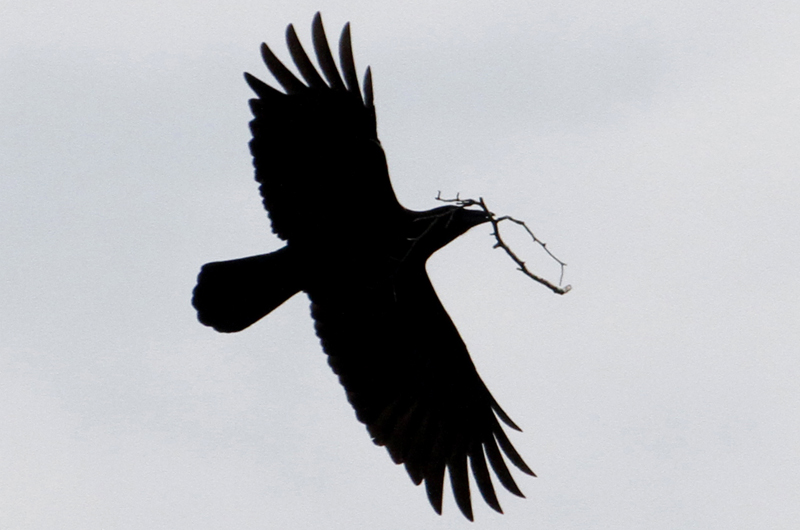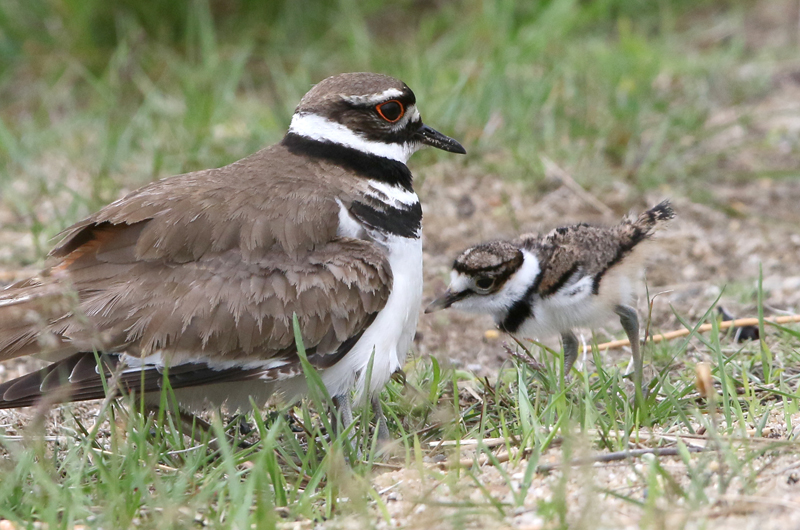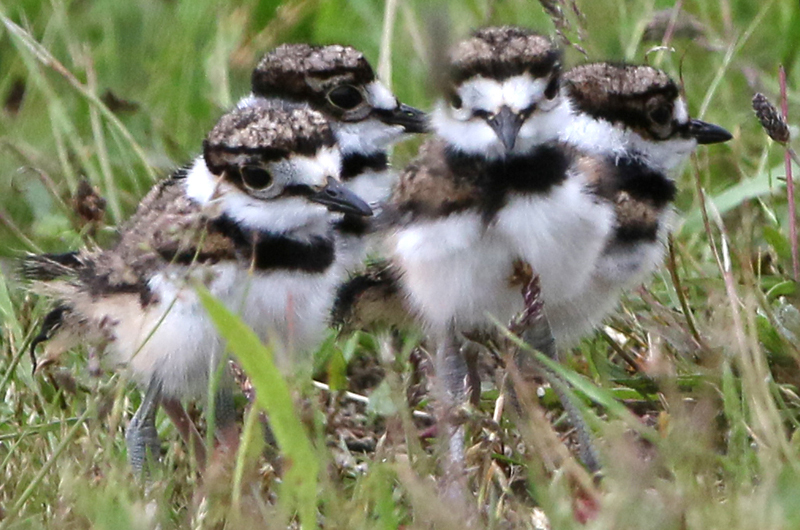June has made it to our shores, even though the cool wet weather seems more suitable for April or May. Despite the weather, the nesting season is well underway, with many of our common nesting birds now fledging their first brood. Young robins, song sparrows, black-capped chickadees, cardinals, Carolina wrens, house finches, starlings and house sparrows are fairly conspicuous now, as are mute swans, Canada geese, and mallard. On the beaches it is time for the plover and oystercatcher chicks to grow and fledge.
We pretty much know which species breed here, but this column investigates how we confirm which species breed here. The most obvious way is to see its nest containing eggs or hatchlings, or to observe young birds that have recently left their nest but are still being fed by their parents. There are two other ways to confirm breeding; a bird is building its nest if you see it carrying vegetation in its beak or feet, or it is feeding its young if you see it carrying food in its beak.
Two species are of particular interest because of recent observations: American kestrel used to be an abundant breeder but I am not aware of any nesting on the Island in the last 20 years or so. Mike Savoy’s recent report of a kestrel in Vineyard Haven near the Lake Street tennis courts in Vineyard Haven is intriguing, especially since Laurie Medeiros also reports seeing kestrels in this area. If it is here now, in June, it may be nesting.
Fish crows have never been confirmed as a breeding species on the Island. This species is found in large flocks during the winter, but that is not when they breed. They are unusual at this time of the year, but I saw one in Oak Bluffs near the middle of New York avenue on June 3; it was a fish crow, rather than the common American crow, for two reasons. I heard its distinctive call and it was barely larger than the road-killed squirrel it was feeding on. Anyone in either area could been on the lookout for the tell-tale signs of nesting described above.
Another interesting aspect of the breeding season is to document the size of a species’ breeding population on the Island. This generally involves counting singing males, as it is easier to hear their song rather than finding them amongst all the foliage. You can use a point count by standing in one location, your yard or some other area of interest to you, for 10 minutes while you count all the individuals of each species you see or hear.
Or you could survey a transect — walking a trail or some other favored route — while recording the location of each singing male on a map. Both techniques suggest that each singing male represents a breeding pair. Repeating either technique several times will generally increase their accuracy. And of course, repeating these techniques in future years can help determine local population trends.
Conducting these observations can improve our knowledge of breeding populations, and, perhaps more importantly, can increase your appreciation of the natural world.
Bird Sightings
Dot Packer has the most unexpected sighting of the week, spotting a red-necked grebe along the west side of Lake Tashmoo on both June 3 and June 4. This species is not expected at this time of the year and it is a very unusual location for this normally oceanic species. We will never know, but perhaps it is the same bird that was observed in Oak Bluffs Harbor on May 13?
Matt Pelikan conducted his annual Federal Breeding Bird Survey on June 4. This survey has 50 roadside locations (point counts) where he identifies all the birds he can hear or see in three minutes before moving on to the next location. His highlights include whip-poor-will (at 4:37am), northern parula at four different locations, Cooper’s hawk, orchard oriole, both willow and alder flycatchers, and relatively few song sparrows and black-and-white warblers.
My Saturday morning guided birding tour got close-up views of killdeer on June 3. Several were in a horse pasture at Herring Creek Farm, and we saw one chick about one week old in a beach parking lot near the right fork at South Beach. We were a little surprised that there were no terns or skimmers visible at Little Beach as observed from the Eel Pond boat-launch ramp.
Sam and Patricia Wainright heard two merlins calling back and forth, and were able to find one of them perched in a pine tree at Wasque on June 1. Merlins have nested on Chappaquiddick in recent years.
He also observed an eastern wood-pewee, eastern kingbird, and great egret. The next day on Norton Point he found about 30 roseate terns near the colony of nesting black skimmers, least terns and common terns, as well as some lingering migrating shorebirds: ruddy turnstones, dunlin, semipalmated sandpiper, and sanderling.
Martina Mastromonaco spotted a bobwhite in the parking lot at Lucy Vincent Beach on June 1.
Now the breeding season is in full swing. Please keep us up-to-date by reporting your sightings to birds@mvgazette.com.
Robert Culbert leads Saturday morning guided birding tours and is an ecological consultant living in Vineyard Haven.












Comments
Comment policy »